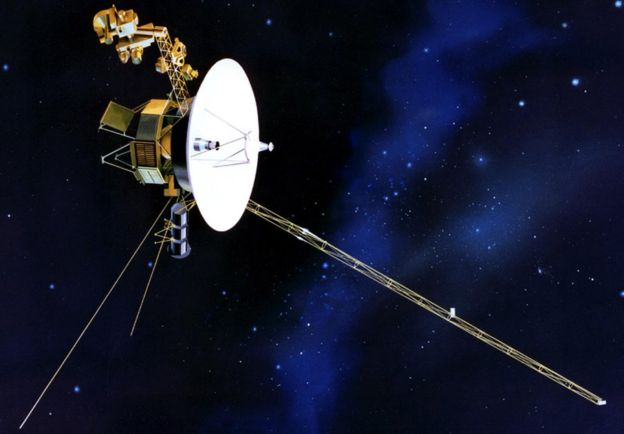Voyager 2: The second probe to enter interstellar space
It's been a long trip!
The chief scientist on the Voyager 2 mission, Professor Edward Stone, recently confirmed that the second human-made probe had gone interstellar on the 5th November 2018! The first probe being Voyager 1, both have now gone further than the boundaries of our Sun's heliosphere into the 'space between the stars'.
It's been over 40 years since the two Voyager probes went out on their journeys of no-return. Those 40 years have seen both probes reach more than 18 billion kilometers (11 billion miles) away from Earth, with Voyager 2 at around 18 billion miles away and Voyager 1 at roughly 22 billion miles. As you can imagine, to get even this far in 40 years requires a tremendous speed! Voyager 2 travels at approximately 54,000 kilometers per hour whilst Voyager 1 travels at 61,000!

Credit: NASA
Where is the edge of the Solar System?
Any stellar system has a definable edge; a boundary that is set by that system's heliosphere. In this case, Voyager 2 has gone further than the boundary set by the Sun's heliosphere; the protective bubble created by the Sun due to solar winds that extends far beyond the planets in our Solar System - even beyond the Dwarf Planets.
The Heliosphere (as seen below) is like a long windsock - the Sun also moves through space as it orbits the center of our galaxy, the Milky Way, so leaves a trail in its wake.
The Heliosheath is the outer region of the heliosphere where the solar winds slow down and rise in temperature as they pile up against the inward pressure of the interstellar winds.
The Heliopause is the boundary between the solar wind bubble and the interstellar winds. Once something goes past this point it can be considered to be 'out of the Solar System'.

Image Credit: NASA/JPL
What next for the Voyager probes?
Neither probe was expected to reach interstellar space. Their original mission was to study the outer planets in relatively close proximity but now NASA are monumentally pleased that the mission can carry on into somewhat unexpected territory! The most optimistic hope is that the probes will last on their plutonium power sources for another ten years and keep on sending back valuable data on the interstellar medium outside our Solar System.
Unfortunately other star's themselves are at such huge distances away from the probes still, it would take another 40,000 years for Voyager 1 to approach one...so it would be a while for us to wait!

